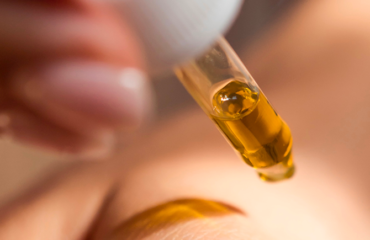
Cannabidiol modulates a large number of biological networks linked to the regeneration of the barrier function, both in terms of the structural quality of the stratum corneum and the improvement of the anti-inflammatory response. This picture of a multidimensional barrier function is completed by the evidence of CBD’s potential action on the skin’s natural defense system against free radicals.

The skin naturally produces several antioxidant molecules to combat reactive oxygen species and protect cells against the effects of oxidative stress. The study carried out on Optima CBD XB® highlighted the activation of NMRAL2P (NmrA Like Redox Sensor 2), a pseudogene targeted by NRF2. It is associated with the production of NQO1 (quinone dehydrogenase), which is involved in antioxidant activity. Optima CBD XB® also regulates expression of the ALDH5A (Aldehyde Dehydrogenase 5 Family Member A1) gene, known to detoxify aldehydes generated, for example, during lipid peroxidation. The antioxidant action potential of the 0.1% active ingredient was confirmed by a proteomic study based on NQO1 measurement, revealing an increase of over 100% compared with the excipient. As a corollary, the genomic study conducted on Optima CBD XB® revealed a remarkable property of the molecule on the management of melanin.
We know that melanin’s main function is to protect our skin from UV rays. The grains of melanin present in keratinocytes form a microparasol above the nucleus (supra-nuclear region) capable of absorbing UV rays, thus preventing DNA damage. Melanin also has strong antioxidant powers, helping to combat free radicals and oxidative stress induced by prolonged exposure to the sun.
In order to play its role, melanin produced in melanocytes inside vesicles called melanosomes must be transferred to neighboring keratinocytes. These melanosomes are then naturally degraded during the keratinocyte differentiation process by enzymes (including cathepsin V). The optimal protective efficacy of constitutive pigmentation thus relies on the right balance between melanin production in melanocytes and the degradation of melanosomes in keratinocytes. By stimulating the expression of genes associated with the transfer of melanosomes – CD1A , POGLUT 1 (protein O-glucosyltransferase 1 ) – or the gene coding for cathepsin V (CTSV), Optima CBD XB® regulates the natural degradation of melanomas, thereby promoting the right balance in the physiological melanin cycle for optimum protection.
All in all, this antioxidant function, combined with the ability to promote the transfer of melanin into keratinocytes, can be seen as a genuine transverse biological function of Optima CBD XB®, promoting a multi-dimensional barrier function. Combining the regeneration of the stratum corneum, the improvement of the anti-inflammatory response, the enhancement of the photoprotection and the antioxidant systems of the skin, the molecule appears as a truly integrative or holistic proposition for the formulation of day care, anti-pollution care or sun care – not to mention, of course, protective formulas for sensitive and reactive skin.



